Landscape Design in Bangladesh
Landscape interior design is the art of bringing the outdoors into your home or business. It’s about using natural elements like plants, water features, rocks, and natural light to create a more calming, inviting, and healthy space. There are many benefits to incorporating landscape interior design into your space. Plants can help to improve air quality, reduce stress, and boost creativity. Water features can add a sense of tranquility and relaxation. And natural light can help to improve mood and energy levels.
Needs of Landscapping Design:
Landscape design is an innovative blend of architecture and nature, focusing on creating indoor environments that echo the tranquility and beauty of outdoor landscapes. This design approach harmonizes spaces with natural elements such as plants, water features, and organic materials, essentially bringing the outdoors inside. The fundamental principles of landscape interior design revolve around balance, harmony, and sustainability. Key principles include:
- Unity: Ensuring all design elements contribute to a cohesive look and feel.
- Proportion: Maintaining the right scale between furnishings, plants, and architecture.
- Natural Light Utilization: Maximizing the use of natural light to enhance the beauty of interior spaces.
- Sustainability: Choosing Eco-friendly materials and practices to protect the environment.
By integrating these principles, designers strive to create spaces that promote well-being, reduce stress, and foster a connection with nature. Design 2morrow Also Provide Home And Office Renovation Remodeling Service in Bangladesh. Please Visit Our Office or Call +8801720636060
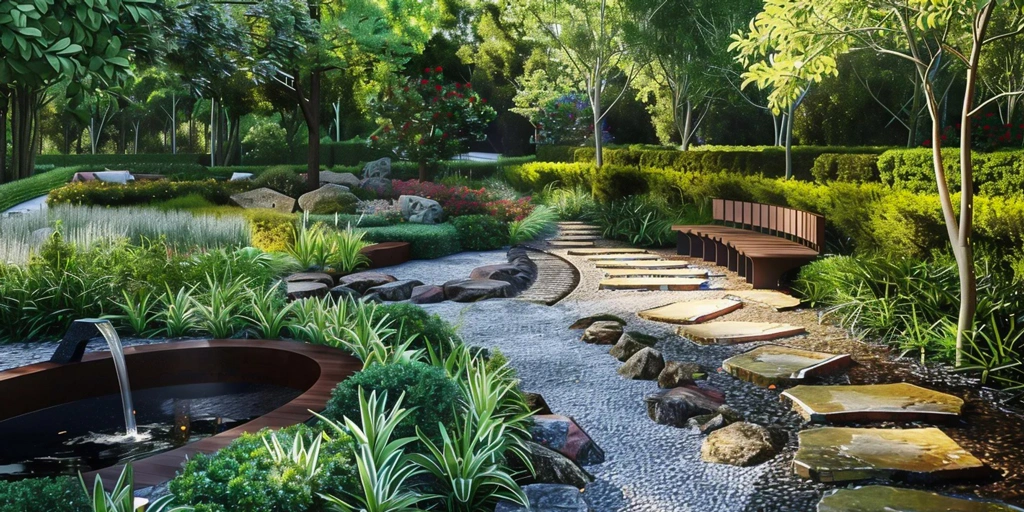
Importance in Design:
Incorporating landscape interior design into living and working spaces is becoming increasingly vital in today’s urban environments Lawn Garden Interior Design Also. As cities grow denser, the need for green spaces increases, making this design approach essential for enhancing the quality of life. The importance of landscape interior design can be summarized through several benefits:
- Enhanced Aesthetic Appeal: Beautifully designed spaces create inviting atmospheres that draw people in.
- Improved Health and Well-being: Studies indicate that exposure to nature can lead to reduced stress, improved mood, and enhanced productivity.
- Increased Property Value: Properties adorned with thoughtfully designed landscapes can see appreciation in value, making them attractive to potential buyers.
- Environmental Benefits: Integrating natural elements can promote biodiversity and reduce pollution levels within urban settings.
For example, imagine a bustling office where employees are surrounded by greenery and natural materials. It not only improves employee morale but also fosters creativity and productivity. In summary, embracing landscape interior design can transform everyday environments into serene oases, benefiting both individuals and communities alike. This design philosophy encourages us to appreciate our surroundings while fostering a deep connection between indoor spaces and the natural world.
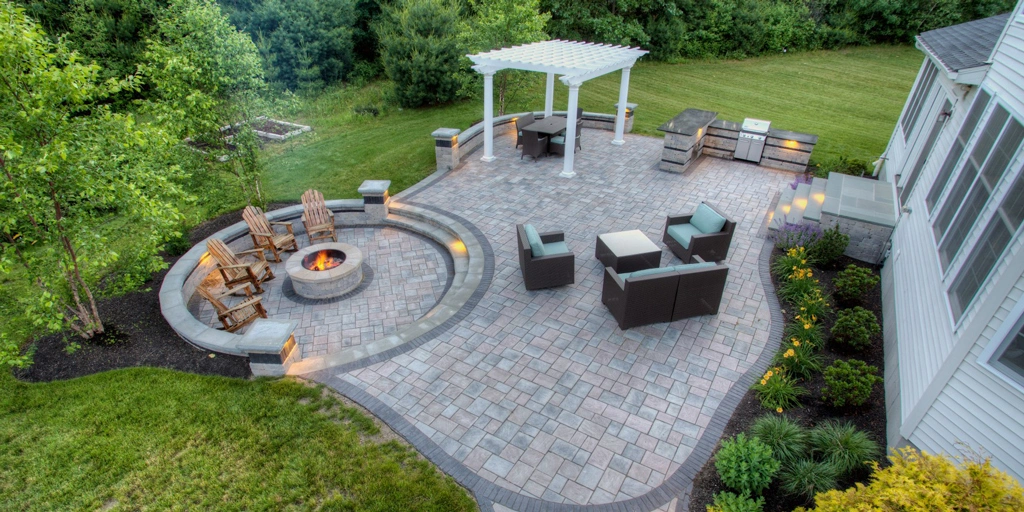
Elements of Landscape Design:
- Natural Materials
In landscape interior design, the use of natural materials plays a pivotal role in creating spaces that resonate with the beauty of the outdoors. Think of components like wood, stone, and metal. Each of these materials not only contributes to the aesthetic but also enhances the overall ambiance of a space. When selecting natural materials, consider the following:
- Wood: Offers warmth and texture. From reclaimed barn wood to sleek bamboo, wood can be used in flooring, furniture, or wall features.
- Stone: Creates a feeling of sturdiness and connection to nature. Options like slate, granite, or limestone can be used for countertops and accent walls, adding an earthy touch.
- Metal: Provides contrast and can enhance natural elements. Consider bronze fixtures or wrought iron accents to enrich a space.
For instance, a living room featuring a reclaimed wood coffee table paired with a stone-clad fireplace creates a welcoming and rustic atmosphere. Imagine sitting there, surrounded by these warm textures, and feeling the connection to nature— it’s truly comforting!
- Plant Selection
In landscape interior design, the use of natural materials plays a pivotal role in creating spaces that resonate with the beauty of the outdoors. Think of components like wood, stone, and metal. Each of these materials not only contributes to the aesthetic but also enhances the overall ambiance of a space. When selecting natural materials, consider the following:
- Wood: Offers warmth and texture. From reclaimed barn wood to sleek bamboo, wood can be used in flooring, furniture, or wall features.
- Stone: Creates a feeling of sturdiness and connection to nature. Options like slate, granite, or limestone can be used for countertops and accent walls, adding an earthy touch.
- Metal: Provides contrast and can enhance natural elements. Consider bronze fixtures or wrought iron accents to enrich a space.
For instance, a living room featuring a reclaimed wood coffee table paired with a stone-clad fireplace creates a welcoming and rustic atmosphere. Imagine sitting there, surrounded by these warm textures, and feeling the connection to nature— it’s truly comforting!
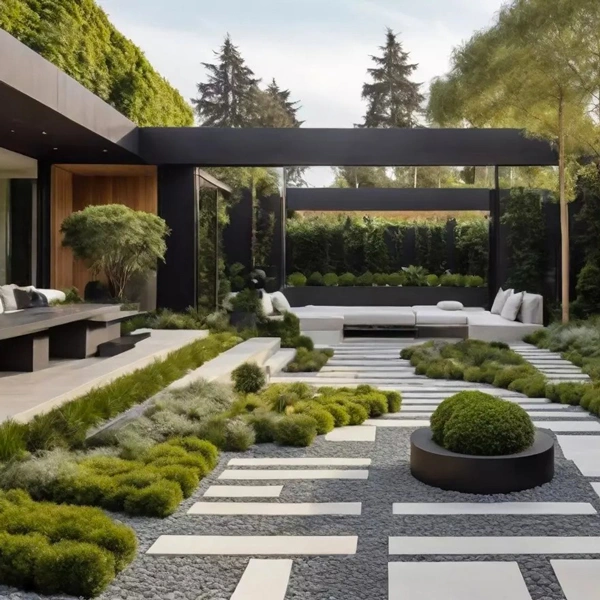
A critical component of landscape interior design is the selection of plants. The right plants can enliven a space, improve air quality, and even influence your mood. However, selecting plants goes beyond just aesthetics; it requires an understanding of their care requirements and how they fit into your environment. Here are a few considerations for plant selection:
- Light Requirements: Different plants thrive in varying light conditions. Choose plants that suit the natural light available in your space—consider options like Snake Plants for low-light areas or succulents for sunlit spots.
- Size and Scale: Ensure the size of the plants aligns with the space. Large floor plants can serve as stunning focal points, while smaller potted plants fit perfectly on shelves or tables.
- Maintenance Needs: Consider how much time you can dedicate to plant care. If you’re short on time, opt for low-maintenance plants like ZZ plants or pathos.
A personal favorite is the Peace Lily—its elegant blooms and air-purifying qualities make it an excellent choice for bedrooms or living rooms. Sitting surrounded by thriving, lush green plants can bring a feeling of peace and rejuvenation to any space. In summary, the thoughtful use of natural materials and careful plant selection are essential elements of landscape interior design that create harmonious and inviting environments. These elements not only beautify spaces but also contribute to a greater connection with the natural world.
Color Palette in Landscape Interior Design:
- Harmonious Color Schemes
Color palettes play a vital role in landscape interior design, setting the tone and creating a cohesive atmosphere. The choice of colors can either enhance the natural elements within the space or overshadow them entirely. When designing color schemes, it’s essential to aim for harmony, ensuring that various colors work together to create a unified look. Here are some tips for creating harmonious color schemes:
- Analogous Colors: These are colors that sit next to each other on the color wheel, such as blue, blue-green, and green. They provide a soft, serene effect and are perfect for spaces where relaxation is the goal.
- Complementary Colors: On the other side of the wheel, these colors contrast with one another, such as blue and orange. Using them can create visual interest and energy, making them suitable for lively spaces like kitchens or playrooms.
- Nature-Inspired Palettes: Drawing inspiration from the outdoors can yield beautiful results. Consider earth tones like browns, greens, and soft blues. For instance, a living room styled with warm beige walls, deep forest green accents, and touches of sky blue can induce a calming yet invigorating environment.
Imagine a cozy reading nook bathed in soft muted greens and vibrant yellows, reminiscent of a sunlit garden. Such color choices can transform an ordinary corner into a haven of relaxation.

- Impact of Colors on Mood
The psychological effects of color are profound and widely recognized. Different shades can evoke varying emotions, influencing how individuals feel in a space. Understanding the impact of colors can help in selecting the right palette for desired atmospheres.
- Warm Colors (Red, Orange, Yellow): These colors typically create energy and warmth, stimulating conversation and social interaction. They work well in dining areas or creative spaces.
- Cool Colors (Blue, Green, Purple): Known for their calming effects, these shades promote relaxation and tranquility. They are ideal for bedrooms or meditation areas, where serenity is paramount.
- Neutrals (Grays, Whites, Beiges): While often understated, neutral tones are essential for creating balance in a space. They can help emphasize other colors and elements, making them versatile choices throughout the home.
Reflecting on personal experiences, a deep blue accent wall brought a sense of calm to my office, allowing for focused work hours. Similarly, integrating soft greens in my living space has fostered a warm and inviting atmosphere for family gatherings. In essence, selecting the right color palette in landscape interior design can dramatically enhance mood and functionality, fostering spaces that are not only beautiful but also supportive of well-being.
Furniture and Accessories in Landscape Interior Design:
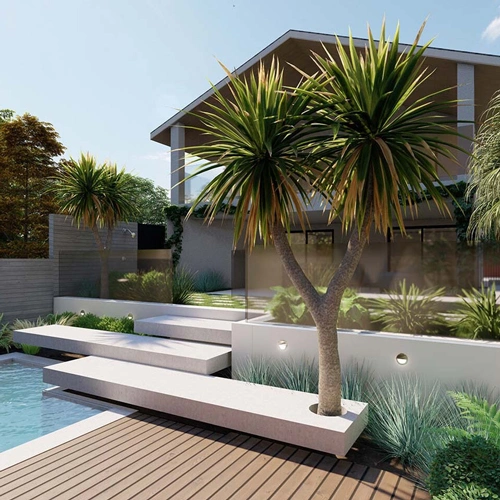
- Sustainable Furniture Options
Incorporating sustainable furniture into landscape interior design not only aligns with eco-friendly practices but also enhances the overall aesthetic of the space. The push towards sustainability is more than just a trend; it represents a conscientious effort to preserve our planet while creating beautiful indoor environments. Here are some sustainable furniture options to consider:
- Reclaimed Wood Furniture: Each piece tells a story. Reclaimed wood from old barns or factories not only provides a unique look but reduces the need for new materials. For instance, a rustic reclaimed wood dining table can serve as a centerpiece that sparks conversations during family meals.
- Bamboo Furniture: Known for its rapid growth and renewability, bamboo is a sustainable choice for various furniture pieces, from chairs to shelving units. Its light color adds a fresh touch reminiscent of a tranquil forest.
- Upcycled Items: Giving new life to old furniture through repainting or reupholstering can be creatively fulfilling. Consider transforming an old dresser into a stunning accent piece with a bit of paint and new handles.
For example, my friend recently revamped her living room with an upcycled coffee table that she painted in a beautiful forest green, providing both functionality and a pop of color.
- Decorative Accessories
Accessories play a crucial role in landscape interior design, adding the finishing touches that bring each space to life. Decorative pieces can accentuate natural themes, enhance color palettes, and personalize any environment. When selecting accessories, consider these points:
- Natural Textures: Use items made from materials such as jute, sisal, or linen. These materials can be incorporated through rugs, cushions, and throws, creating a cozy atmosphere reminiscent of the outdoors.
- Live Plants: Not just for decor, but as vital contributors to air quality and mood enhancement. Succulents or ferns in beautifully designed pots can serve both functional and aesthetic purposes.
- Art that Reflects Nature: Wall art featuring landscapes, botanical illustrations, or even nature-inspired abstract pieces can beautifully complement the theme of landscape interior design, enhancing the connection to nature.
Reflecting on personal experiences, I’ve adorned my living room with a combination of natural fiber rugs and lush indoor plants. Not only do they add character, but they also create a soothing atmosphere that invites relaxation. In summary, integrating sustainable furniture and thoughtfully selected decorative accessories into landscape interior design can create environments that are both beautiful and reflective of one’s values. Balancing functionality with aesthetics allows one to enjoy spaces that celebrate nature and contribute positively to the environment.
Lighting in Landscape Design:
- Natural Light Utilization
Incorporating natural light into landscape interior design is a fundamental aspect that enhances both functionality and aesthetics. Harnessing sunlight not only illuminates the space but also creates a dynamic atmosphere that evolves throughout the day. This interaction with light can significantly impact the mood and comfort level of a room. To optimize natural light in your design, consider the following strategies:
- Window Placement: Strategic positioning of windows can maximize sunlight exposure. Large, floor-to-ceiling windows or sliding glass doors can create a seamless connection between indoor and outdoor spaces. Imagine sipping your morning coffee while basking in the warmth of sunlight streaming through your living room, transforming the entire vibe of the day.
- Open Spaces: Open floor plans allow light to flow freely from one area to another. Eliminating unnecessary walls can create a brighter environment, making spaces feel more spacious and welcoming.
- Reflective Surfaces: Incorporating mirrors or glossy finishes can help bounce light around the room. A well-placed mirror can not only serve as a beautiful decorative piece but can also create the illusion of more space and contribute to an overall brighter environment.
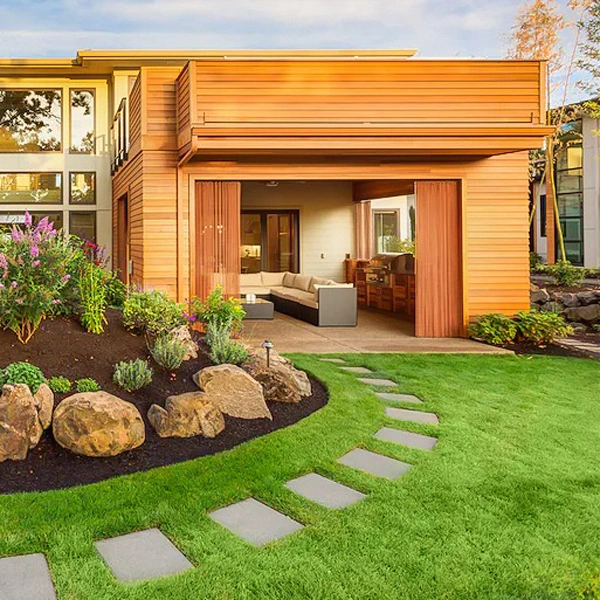
For personal insight, I once redesigned a small study to focus on utilizing natural light. By adding a large window and using light-colored furnishings, the room transformed into a lively workspace filled with warmth and energy, making it hard to resist spending hours there.
- Strategic Landscaping: Another aspect to consider is the planting of trees and shrubs outside windows. By choosing deciduous plants, which lose leaves in winter, you can allow sunlight to flood in during colder months while providing shade in the summer.
In essence, the effective utilization of natural light in landscape interior design can lead to a harmonious balance between functionality and beauty. It promotes a sense of well-being while enhancing the connection to the outdoor environment. By thoughtfully considering how light influences a space, designers and homeowners alike can create inviting interiors that resonate with a peaceful ambiance, truly celebrating the essence of landscape-inspired living.
- Artificial Lighting Techniques
Artificial lighting is a crucial component of landscape interior design, providing the necessary illumination when natural light isn’t available. While natural light brings warmth and a sense of connection to the outdoors, artificial lighting enhances the usability of a space at all times of the day, allowing for functionality and ambiance. When thoughtfully employed, artificial lighting can transform a room by highlighting its best features and creating mood.
Types of Artificial Lighting
There are several artificial lighting techniques to consider, each serving distinct purposes:
- Ambient Lighting: This is the general illumination of a space, setting a base level of brightness. Ceiling-mounted fixtures, chandeliers, or recessed lights contribute to ambient lighting. For example, a lovely pendant light can become a stunning centerpiece that draws the eye while providing overall room illumination.
- Task Lighting: Focused on specific areas where activities take place, task lighting improves usability. Think about reading lamps next to a chair or under-cabinet lighting in the kitchen. These lights help decrease strain and improve visibility, making your spaces more functional.
- Accent Lighting: This technique highlights particular features, such as artwork, architectural details, or indoor plants. Adding adjustable spotlights or wall sconces can help showcase your favorite decor pieces, creating visual interest in the room.
- Layering Lighting for Effect
An essential aspect of using artificial lighting in landscape interior design is layering. Combining these various types of lighting not only enhances the atmosphere but also allows for flexibility depending on the time of day and the desired mood. Here’s how you can effectively layer lighting:
- Start with ambient lighting to ensure the room is well-lit.
- Add task lighting where necessary to support specific activities.
- Finally, introduce accent lighting to draw attention to design features and create a welcoming ambiance.
For example, in my dining room, I installed a beautiful chandelier for ambient light, added wall sconces for task lighting during meals, and positioned spotlights to highlight some artwork. The combination created an inviting atmosphere suited for both dinner parties and casual family meals. In conclusion, integrating thoughtful artificial lighting techniques with a focus on layering can elevate the overall experience within a space. Each room can exude warmth and beauty, all while enhancing functionality and delivering a sense of comfort that reflects the essence of landscape interior design.
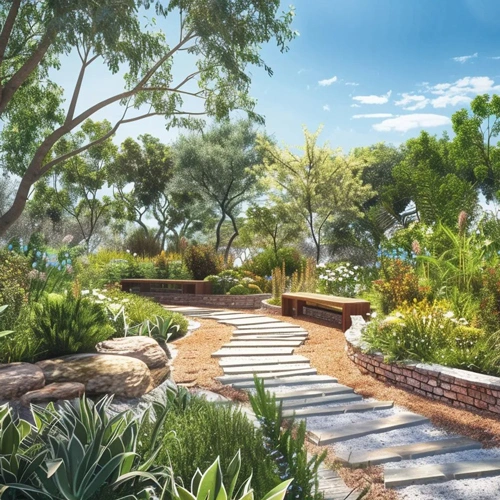
Here are a few ideas to get you started:
If you’re interested in incorporating landscape interior design into your space, there are a few things to keep in mind. First, consider the amount of natural light available in your space. Plants need light to survive, so you’ll need to choose plants that are appropriate for the amount of light you have.
Second, think about the style of your space. Do you want a modern look or a more traditional feel? Once you know the style you’re going for, you can choose plants, furniture, and accessories that complement it.
Finally, don’t be afraid to get creative! There are endless possibilities when it comes to landscape interior design. With a little planning, you can create a beautiful and functional space that brings the outdoors in.
- Create a living wall. Living walls are vertical gardens that can be used to add greenery to any space. They're a great way to add color and life to a blank wall.
- Add a water feature. Water features can add a sense of tranquility and relaxation to any space. They can be anything from a small tabletop fountain to a large koi pond.
- Use natural materials. Natural materials like wood, stone, and bamboo can help to create a more organic feel in your space.
- Bring in natural light. Natural light is essential for good health and well-being. If possible, try to maximize the amount of natural light in your space.
Landscape and Design Services We Provide
Landscape Interior Services We Provide If you’re looking to offer landscape interior services, here are some options to consider including:
Consultation: Meet with clients to discuss their vision, assess their space (both lighting and square footage), and understand their budget.
Design: Create a customized plan for the client’s interior landscape, including plant selection, pot choices, furniture recommendations for planters, and potential water feature incorporation.
Installation: Professionally install all the plants, water features, and any necessary lighting or irrigation systems.
Maintenance: Provide ongoing maintenance services, including watering, pruning, fertilizing, and pest control for the plants.
Living Wall Installation and Maintenance: Specialize in creating and caring for living walls, which require specific installation techniques and ongoing care.
We can also offer additional services to set yourself apart:
Seasonal Plant Rotations: Switch out plants throughout the year to keep the interior landscape looking fresh and vibrant.
Custom Terrarium Design: Create unique and beautiful terrariums for a touch of contained greenery.
Event Greenery Rentals: Provide temporary plants and arrangements for events or photo shoots. Aromatherapy Integration: Incorporate fragrant plants or essential oils to enhance the ambiance of the space.
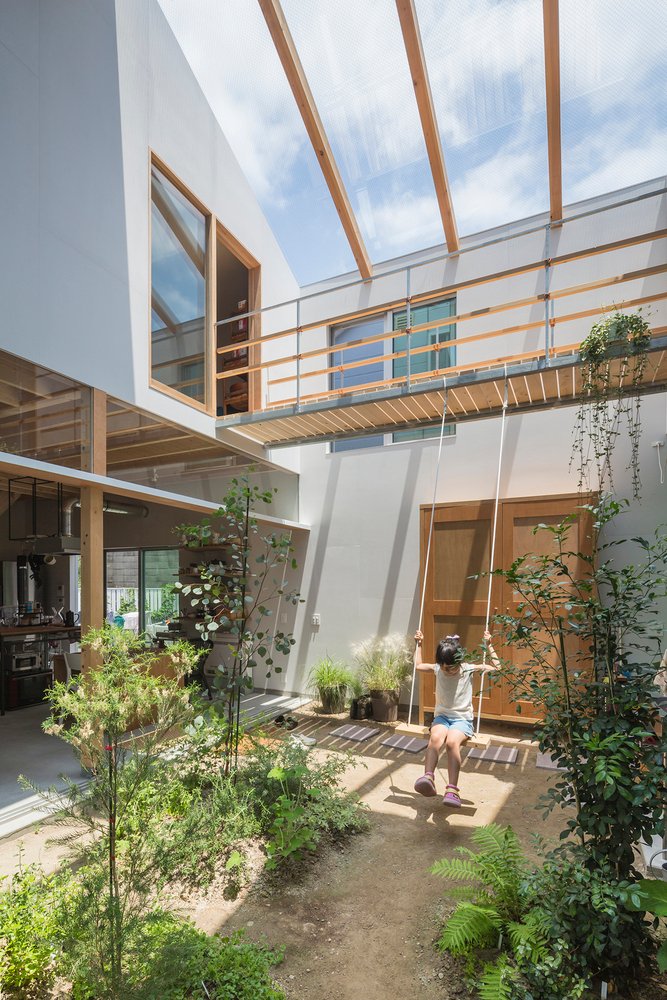
Explore the best Landscape Services at Design 2morrow
Design 2morrow area of expertise in Landscape interior design, there’s a chance might collaborate with landscape designers or offer some level of landscape interior services. Here’s how D2M can explore this further:
Check Our website: Look for any mention of landscape design or plants on website, design 2morrow. We have a dedicated page for these services or it could be mentioned within our general service descriptions.
Contact Design 2morrow: Call us at +8801870-720555 or reach out through our website contact form. Directly ask Our team if For offer landscape interior design services.
Read Our blog or social media: Design 2morrow have mentioned landscape design in a blog post or social media update. Check our platforms for any landscape design related content.
Look for online reviews: Search online review platforms to see our past clients mentioned landscape design services from Design 2morrow.
Consider Special: Design 2morrow offer landscape interior design with Special Facilities.
Here are some compelling reasons why choose Design 2morrow, for landscape interior services:
- Expertise and Design Savvy
- Expart qualified Team
- Quality and Care
- Guarantee healthy plants
- Regular maintenance
- Unique Selling Points
At Design 2morrow, our passionate landscape interior designers combine expertise with vision to create a thriving indoor oasis that complements our existing style.We source high-quality plants and meticulously maintain them to ensure they flourish and bring lasting beauty to your space. Go beyond the ordinary with Design 2morrow! We specialize in creating stunning living walls and terrariums, adding a touch of unique greenery to your interior.
FAQ about Landscape Design:
-
What is Landscape Design?Landscape design is the art of arranging and modifying the features of a landscape, focusing on landscaping aesthetics and the ecology of the area. It involves various elements such as plants, structures, and terrain to create a visually pleasing and functional outdoor space.
-
Why is Landscape Design Important?
1. Aesthetic Appeal: A well-designed landscape enhances the beauty of a property.
2. Environmental Balance: Good landscape design promotes ecological diversity and sustainability.
3. Increased Property Value: Attractive landscaping can significantly boost a property’s market value. -
What Are the Key Elements of Landscape Design?
Element Description Plants Trees, shrubs, flowers, and grasses that add color and texture. Hardscaping Walkways, patios, walls, and other non-plant features. Water Features Ponds, fountains, and pools that add tranquility and movement. Lighting Outdoor lighting for safety and ambiance. Furniture Benches, tables, and chairs for functional outdoor living.
-
How Do I Start a Landscape Design Project?
1. Define Your Goals: Determine what you want to achieve, whether it’s creating a garden, patio, or outdoor living space.
2. Evaluate Your Space: Analyze the site conditions such as soil type, sunlight, and existing structures.
3. Create a Plan: Map out the layout, selecting plants and materials that complement your vision.
4. Budgeting: Establish a budget for materials, plants, and professional help if needed. -
How Much Does Landscape Design Cost?The cost of landscape design varies widely depending on:
• Size of the Area
• Complexity of the Design
• Materials Used
• Professional Fees (if applicable) On average, you can expect costs to range from BDT 1,50,000 to 50,00,000 or more for a complete design. -
When is the Best Time to Start a Landscape Design Project?The ideal time to begin a landscape design project is:
• Early Spring: For planting and installation.
• Fall: Great for planning the next year’s landscape. Begin the planning phase several months prior to your intended start date. -
What Mistakes Should I Avoid in Landscape Design?
1. Ignoring the Site Conditions: Consider sun exposure, wind, and soil type.
2. Overcrowding Plants: Ensure adequate space for plants to grow.
3. Neglecting Maintenance: Choose plants and designs that fit your lifestyle and maintenance capabilities.
Design 2morrow
Typically replies within minutes
আসসালামু আলাইকুম,
আপনার প্রয়োজণীয় তথ্য জানার জন্য ফোন করুন,
☎️ +8801870720555, অথবা- ভিজিট করুন আমাদের ওয়েবসাইট-
🌍 www.design2morrow.com
ধন্যবাদ
Design 2morrow | Interior Design Company
Landscape Design?
WhatsApp Us
🟢 Online | Privacy policy
WhatsApp us




